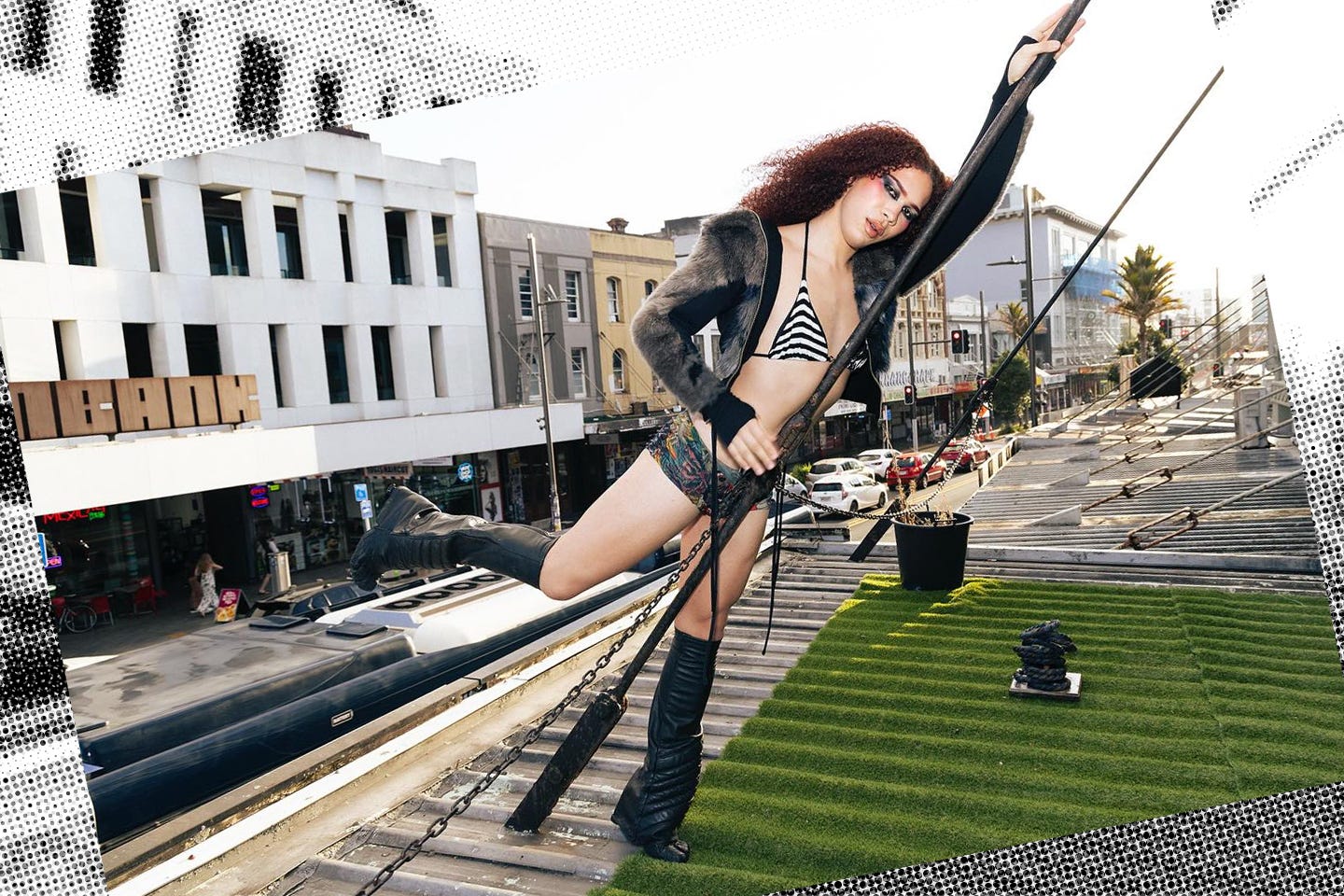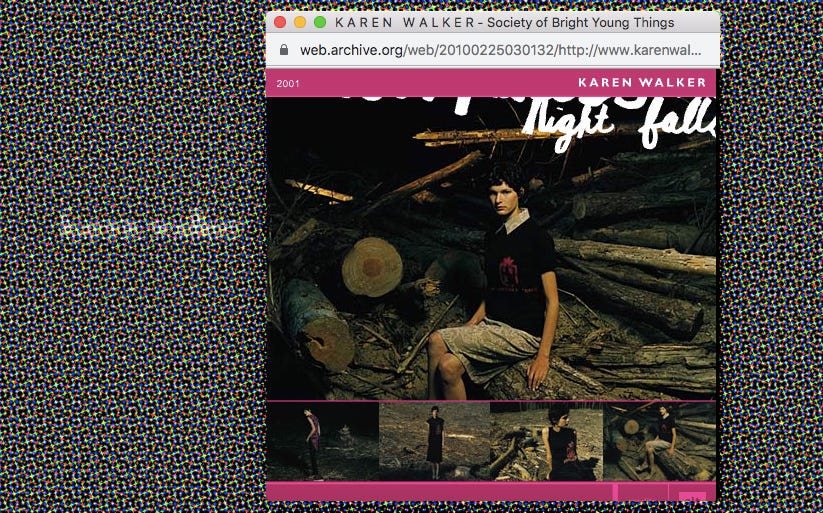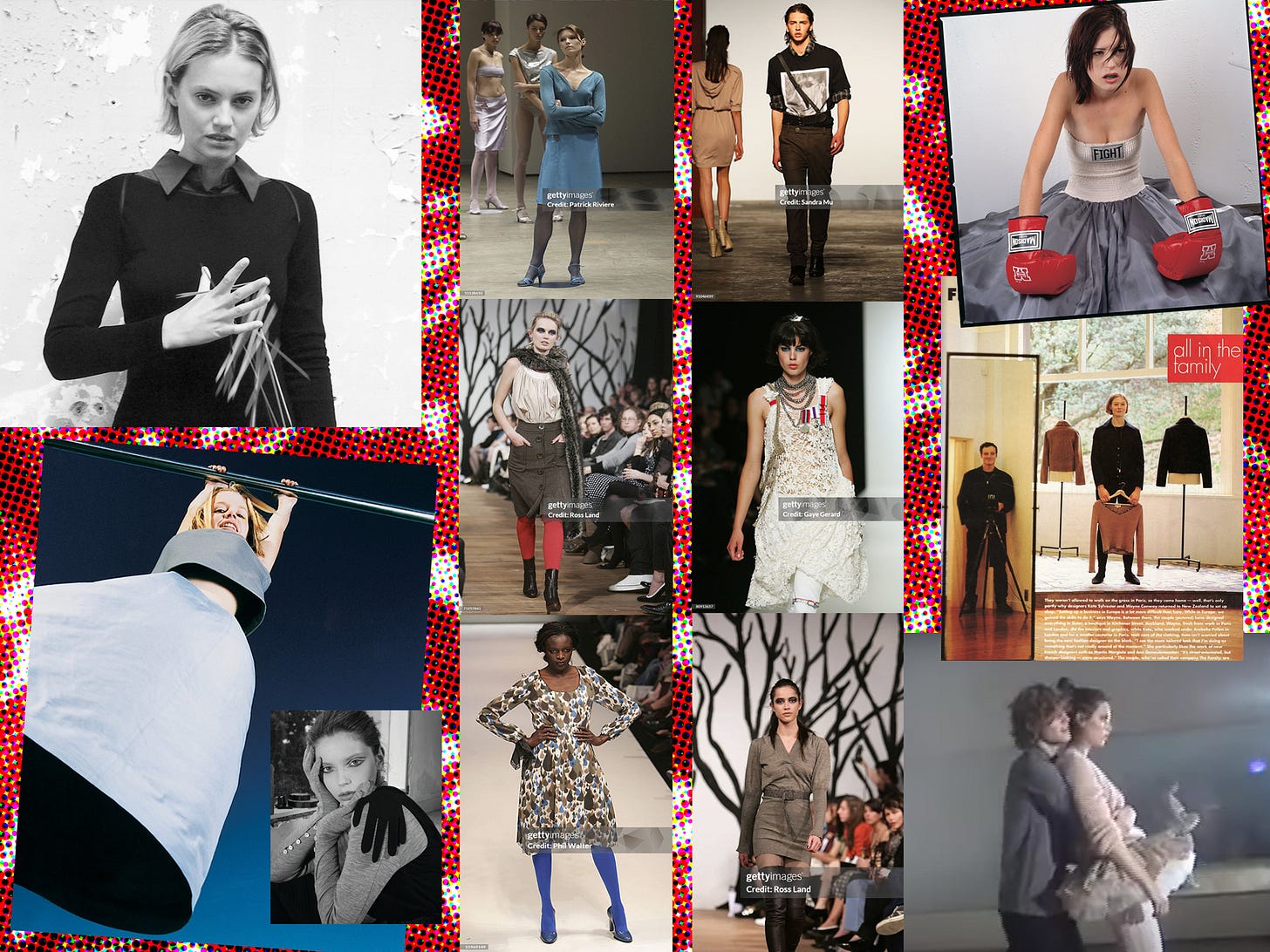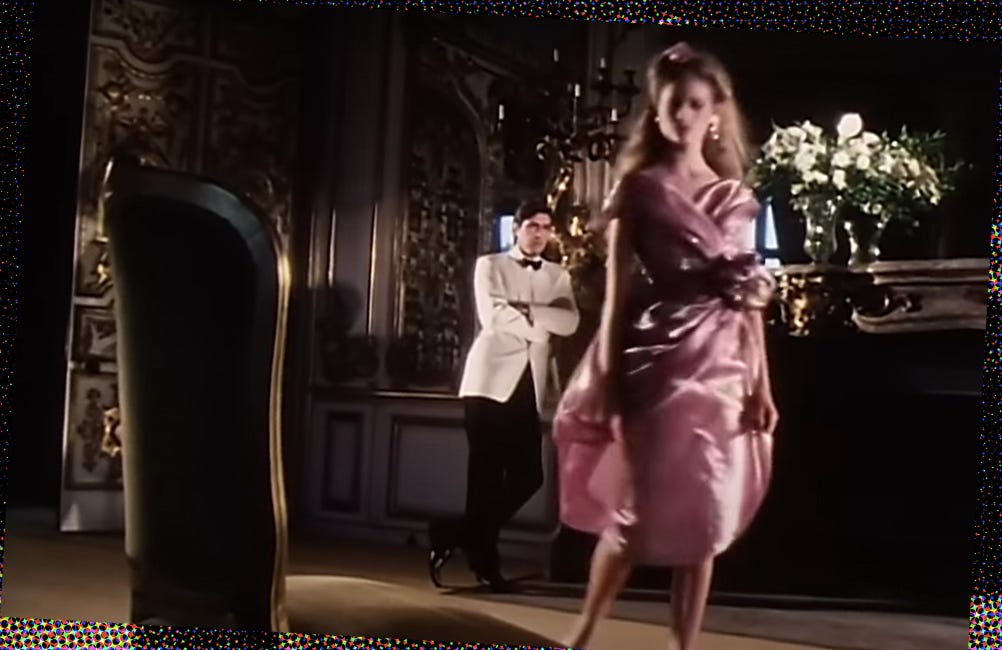Change is afoot (and I have a newsletter now)
I handed in my swipe card, signed up for Substack, and have time on my hands.
Hello, in lieu of an introductory manifesto or agenda-setting essay, here you’ll find some preamble about why I came to this platform a laggard, and an assortment of observations from the past week: Waistbands are as low as Aotearoa’s consumer confidence, creativity is kind of like Auckland’s stormwater drains, Kate Sylvester wrapped up, the Beatles are the new Marvel, and abundance is the buzzword du jour.
When people ask whether I’m ambitious, all I can muster is a response explaining how opportunism is more my style. It’s what led me to hand in my swipe card and leave the New Zealand Herald and Viva after five years in that big glass building on Graham Street.
There’s something in the water, or perhaps it’s a season for change (for those who take stock in such things, the astrological year has just ended) because I know scores of people in the throws of flux.
Much of it is public knowledge. Kristine has shuttered Gloria; Thom will do so too with his namesake brand; and Karl and Ophelia closed their small, purple Roses Dining Room (I should have gone more and now it’s too late). Some changes are whispered or in the works — with new things being cooked up as we speak. Other news is delivered with nonchalance; life-changing announcements uttered with all the gravity of a coffee order, and all you can say is “buzzy”. Friends are both fleeing the country and some returning (albeit temporarily) after a decade abroad, to find a town much changed but also not at all. And, like me, so many of my colleagues and peers have departed our media jobs, emerging from the stale office air and unrelenting Slack notifications, blinking into the daylight outside.
Change is visible too. Listing everything I’ve noticed recently would be a bore, but it’s worth looking up from your phone now and then to see the fabric of the city and how it’s taking shape. Auckland’s not as dull as everyone likes to pretend, and dragging this place doesn’t make you sound as cosmopolitan — or serenely pastoral — as you think it does.
The calendar is chocker. As I write this, Polyfest is marking its 50th anniversary, and 11,000 kids from 77 schools will compete at the Manukau Sports Bowl. It’s a long way from the four schools of the first event in 1976, a year when 2.1% of the country’s population was Pasifika and the Dawn Raids were ramping up. Now that figure is 8.9% — two-thirds of whom live in Auckland, the ‘Polynesian Capital’ of the world — and Polyfest is the biggest Polynesian cultural festival in the world. You can attend, or stream it online.
From one creative hub to another, Karanghape Road has had a lot going on too. Last week found me up there on multiple occasions, and it’s still one of the best places to be in the central city, with its Scarry-level amount of personality and a patina that can’t be buffed away (no matter how many wine bars and bakeries open).
There was even more energy than usual due to Te Wiki Āhua O Aotearoa, a youth-led alternative fashion week that’s vocally anti-establishment. I attended some shows, reporting for Viva alongside my former colleagues Dan Ahwa, Maddy Crutchley and Tyson Beckett.

We saw inventive upcycling, balaclava-ed ballerinas, catwalking through convenience stores, tits and ass galore, a gimp-masked model being dragged off the runway, and many things I want to buy and wear: namely, the idiosyncratic T-shirt-bikini hybrids at the Mark Of The Maker show, and a very smart Bridie Chapman halter top made of old neckties that I would wear to the newsroom if I still worked there.
Oh, and if the runways and attendees are anything to go by, waistbands are as low as the country’s consumer sentiment and business confidence, in case you hadn’t already noticed the expanses of solar plexus swaggering around town.
It was hot last time and it’s hot now (the fashion convention, not the Global Financial Crisis). Media and experts have done a lot of hand-wringing over young people’s disinterest in sex but everything proposed last week begs to differ.
Like our stormwater drains during a deluge, Tāmaki’s underground creative scene surfaces when the timing is right — a tipping point reached — and you know where to look. And this cohort of young creatives has been explicit about looking outside the status quo (read their statement of intent if you haven’t already) for their methodology.
The other side of the coin was also on the table last week, with New Zealand Fashion Week hosting a ‘town hall’ meeting at Josh Emett's Princes Street restaurant Onslow for an industry crowd, where it was announced, among other things, that Karen Walker’s back on the schedule, news enough to make headlines. (She last showed in the early 2000s, and only ever did a couple, before decamping to New York Fashion Week).

The brand and business have evolved a lot since then. Early collections like 2004’s Liberal & Miserable and 2007’s Victory Garden (from which I have two runway samples that I still wear regularly) were, alongside Kate Sylvester and Zambesi, some of my earliest entry points into local fashion, courtesy of our robust assortment of local magazines and Stacy Gregg’s ahead-of-its-time Runway Reporter.
Given Kate Sylvester had its final day of trading yesterday, I want to take a beat to look back on some of the label’s greatest hits. Since the announcement last year and the brand’s 30th anniversary in 2023, Kate and Wayne have been resurfacing images from the past — archives are so important — and they’re a salient reminder of how good ideas remain relevant and, if anything, increase in cultural value.
And they could put on a show. There was the studied undress shown at Sydney Fashion Week in 2003; a Mitford medley, Love in a Cold Climate, in 2004; and the distraught, hanky-armed women of Stop Your Sobbing in 2005.
And then there was Wolf. With its overt references to Little Red Riding Hood, a tale of innocence and illicit transgression that remains under society’s skin centuries on, the 2006 collection had particular appeal for an aimless teenager in suburban Auckland.

It was enough to make you want to write about fashion and culture, so I did.
Back then, blogging was the digital medium upending the apple cart and opening gates — endearing to look back on, once you shrug off the cringe — and engendering handwringing from traditional media (not unlike the present panic around newer, shinier platforms and who gets to create culture). More would change than anyone realised, and here we are today, with things coming full circle in a way, and writers hanging up their shingles on Substack. Including me, the eternal opportunist.
So, without making this a boring statement of intent or holding myself to an overly ambitious publishing schedule — publishing on Fridays seems realistic? — consider this a place to come for regular missives on taste and culture from Tāmaki Makaurau, a string wall of conjecture and premonitions. And good vibes (I hope).
This week I’ve been:
Seeing… Ngahuia William’s debut show In the Ngahere, a moody meditation on Aotearoa’s native bush, at the Allpress Studio gallery on Drake Street, which launched last night. Dashing across town in the rain for the Ensemble subscriber event at Gus Fisher Gallery Te Whare Toi o Gus Fisher was worth it to see Yoko Ono’s Cut Piece (1964) in the flesh, and the six decades since it was staged at Carnegie Hall have done nothing to temper the unease. It’s part of the new exhibition Having it all, all, all — curated by Lisa Beauchamp — which counts Martha Rosler’s Martha Rosler Reads “Vogue” (1982), Howardena Pindell’s Free, White and 21 (1980), and the quite-literally-smashing Ever Is Over All (1997) by Pipilotti Rist among the works on show.
Bookmarking… places to eat thanks to the latest Metro and food editor Charlotte Muru-Lanning’s warm, comprehensive canvassing of the city’s sub-$25 meals. The popular list is back — the magazine’s ‘Cheap Eats’ designation is back too — and this should sell well at newsstands given the present pressure on wallets. I got mine, as always, at the newsagent on Victoria Street West, and flipped straight to Ella Scott-Fleming’s story about that scene photographer.
Listening to… a lot of Roxy music — Avalon (1980) and Flesh And Blood (1983) — and Kneecap.

Reading… Graydon Carter’s memoir and Mark Fisher’s Capitalist Realism, a combination that’s very boom boom BOOM. (We all know how the 1980s ended and I maintain that ‘boom boom’ is a cargo cult).
Watching… the new season of The White Lotus, and then chuckling over Evan Ross Katz’s highlights. I love the Thailand setting, and Mike White’s exploration of modern appetites and consumption — whether insatiable for revenge, spiritual salvation, or a sibling. Someone online, I can’t find it now, called this season (particularly Sam Rockwell’s monologue) a reflection of American imperialism and they’re so right. Also, speaking of hunger, there’s Yellowjackets, which it feels like far more people should be tuning into. At least there’s a passionate subreddit devoted to the series, and my darling friend Jena.
Wondering… whether the new Beatles franchise (since there’s four films announced I think it’s fair to call it that) is the new Marvel Cinematic Universe for music IP. Timothée’s turn as Bob Dylan turned on a new generation to his music — and Joan Baez. There have been hours of Fab Four content released in recent years, but this has four of the hottest young actors in Hollywood, all of whom are from across the pond (though none Liverpudlian). They all looked very smart and tasteful in the promotional images though, in their matching black slacks and no saucy tops to scare off older audiences.
Giving feedback on… Creative New Zealand’s draft long-term strategy. You can too.
I feel like everyone’s talking about… abundance, or they will be soon. Between Ezra Klein and Derek Thompson’s new book, its discourse, and the wider ecosystem of think pieces and podcasts — this one’s good — about the glut of choice, it’s shaping up to be a contender for our definitive word of 2025. Or maybe just this week. We’ve long had a problem with overproduction and overconsumption of everything, including media, not to mention an inherent tension of modern life rests on the scarcity of some things (affordable housing, job security) and ubiquity of others (Temu goods) all amidst a looming global trade war — so late 1980s — and I’m interested to see where this goes, and to read this book. I do wonder whether this will be yet another binary or dichotomy, a new proverbial fence erected to yell across.
What do you want to hear about? Tell me in the comments.



This is great! I feel like your throat chakra has been unblocked or something? Maybe it’s the freedom to do and say whatever. Xox
A little late to the first newsletter but so glad to have found you here. I feel like between you, Chris Schulz and the Ensemble ladies I’m now taken care of culturally.